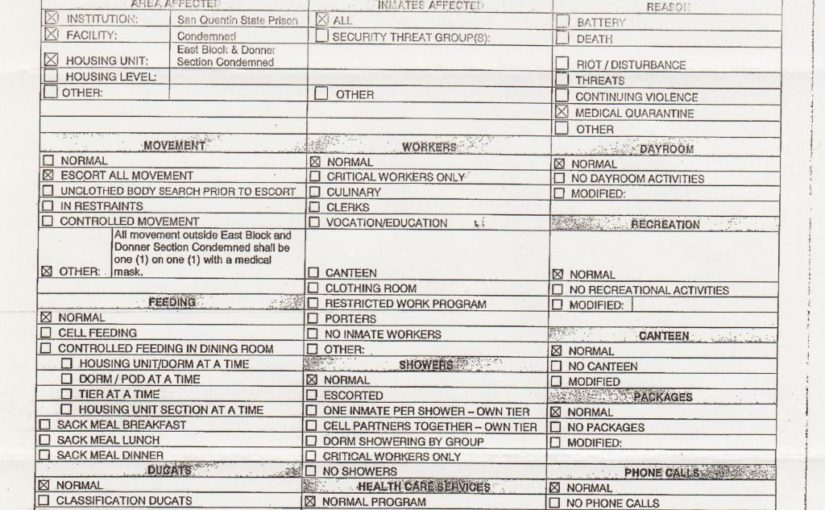Hi Everyone! Yes. It has been a while since you’ve heard from me.
I am going to be honest with you, folks. I had NO idea how much time and work it takes to write a book. My hat is off to anyone who has ever completed the task. That being said, I’m chipping away at my book, and I’m pleased with my progress so far.
An Update on Rachel Buffett’s Court Case
Many of you want to know what’s up with Rachel Buffett’s case. It appears to be on hold. As of this writing, there is nothing on the court schedule for Rachel’s trial through the end of May, which is the farthest date available on the Orange County Courts search.
An Orange County Register article about her February court appearance states that DA Matt Murphy “said he has been working to resolve the case in a possible plea deal, but Buffett’s defense lawyer, David Medina, said he and his client are prepared to go to trial.”
I guess they are feeling pretty confident about proving Rachel’s innocence in court. She has not been charged with murder. She’s currently only facing around three years behind bars for lying to the police after the murders of Sam and Julie. This doesn’t mean the authorities don’t want to charge her with murder; they just don’t have a way to prove it.
For now, Rachel remains out on bail.
And hopefully doesn’t know where I live.
Meanwhile, At San Quentin…
Daniel Wozniak, though, is tucked away on death row in San Quentin State Prison for the murders of Sam Herr and Julie Kibuishi.
His only change of locale comes from moving to a different cell. And that’s what happened last week.
Prisoners have no say in where they’ll be housed. They can make requests, but if an inmate isn’t “content with his neighborhood,” he can’t asked to be moved without a good reason.
In the past couple of months, a number of prisoners were released from the AC (the Adjustment Center), and back into main death row housing. Daniel got a bunch of new neighbors. Soon after, the noise level, and the number of “shenanigans,” increased a great deal.
Nevertheless, to ask the guards to move to a more peaceful area in San Quentin State Prison is akin to asking an usher at the Super Bowl if you can be seated in a quiet spot in the arena.
What’s an inmate to do?
Well, Daniel had a lucky break – literally – when both the sink and the toilet in his cell became inoperable. For some reason, there was no water coming into Daniel’s cell at all. The California Department of Corrections has a policy that an inmate cannot be confined to a cell without access to water for an extended period of time, and the issue in Daniel’s cell wasn’t going to be a quick fix.
The guards didn’t want to be running to get him bottles of water all the time, so the simplest solution (suggested by Daniel) was to move Daniel to another cell that had recently become vacant on the same tier.
You wouldn’t think it would make much of a difference, but Daniel claims it’s actually a lot quieter and calmer on that end. It’s easier to study and read.
Yes. It certainly was timely and beneficial for Daniel that his cell had plumbing issues just when he was contemplating a move to a new area.
Not So Much a Change of Scenery as a Change of Cells
The details that go into changing prison cells are interesting. Things I’d never even consider worrying about could lead to an inmate being sent to “the hole.” This would mean a loss of many privileges such as telephone time and having visitors. It’s really important to obsessively clean your new “home” before you move in.
And I will get to that in a minute. First, I feel the need to mention something many of you might have been thinking as you read the intro to this post:
“Who the hell cares if Dan Wozniak is living in a peaceful environment when two innocent people are dead because of him?”
Like many of you, I’m fascinated by this prison world. So when Daniel tells me what it’s like to move from cell to cell, I think it will make an interesting blog story.
I’m still acutely aware of why Daniel is living in a cell in the first place. It could be said that he deserves much worse than where he is now.
Sam Herr is dead. Julie Kibuishi is dead. Daniel Wozniak is alive. It is not fair. If Daniel had to share a cell with six other people, subsiding on only bread and water, he’d still be lucky he gets to wake up every morning.
That being said, let’s return to prison life.
New Digs, No Trust
We have all watched movies and TV shows where a prisoner has his cell searched by the guards. Uniformed men completely trash the inmate’s living space. They are looking for hidden contraband and they know inmates can be ingenious when it comes to stashing their stash.
Weapons are the most dangerous finds. A piece of metal can be easily be sharpened into a knife. Illegal drugs and other contraband “somehow” manage to make their way behind bars as well.
When inmates are aware that a search is about to take place, smuggled cell phones are slid far away from the cells and out onto the tier walkway. Toilets are repeatedly flushed. An institution-wide cell search can take days because of the thoroughness of the officers.
Knowing this, Daniel has learned never to trust that a new cell is safe to move into. During his seven years of incarceration at the Orange County Jail, Daniel was obligated to change cells twenty times. He got very good at moving and cleaning.
Daniel is clearly proud of his knowledge and experience of prison living.
He laughs as his early days as a “new fish” at the OC Jail when he barely swept inside a new cell. That changed when he met a fellow inmate with a strange infected wound covering the better part of his arm (which required daily bandage changing by the jail nurse), and Daniel’s eyes were opened to what kind of germs could have been left over from past tenants.
He jokes about “swabbing the deck” like a pirate because he doesn’t want to end up with a hook arm or a peg leg.
Getting ill is actually the lesser of two possible concerns that can arise from an inadequate “treasure hunt.” If you don’t look for all the “booty,” it could be “your booty on the line.”
Are we seeing a bit of a theme in this recent letter?
Daniel treats every new cell as if the previous occupant was “his mortal enemy who was hell-bent on framing (him) for a crime, but the guy died of Ebola while in the process.”
Once arrangements had been made for Daniel to change cells, one of the guards gave him some boxes so he could pack up his belongings. The guard then walked a handcuffed Daniel over to his new digs and locked him inside. The guard got a rolling cart and brought Daniel’s boxes over to him. The boxes were put inside the cell. The door was locked. The handcuffs removed.
The whole move took about thirty minutes and Daniel didn’t even need to find a friend with a pickup truck.
Cleaning Detail
The first order of business, before unpacking anything, is to make sure every square inch of the space gets washed, soaped, scrubbed and disinfected. This is a three-part process for Daniel.
- He uses the state-issued powder soap and water to get rid of the surface grime.
- He uses an anti-bacterial bar soap to deep clean the entire cell. He buys the soap himself. It’s usually Dial.
- He makes a concentrate with powdered laundry soap and water and goes over it all for a third time. Daniel buys the laundry soap as well. It’s usually Gain. He likes the smell.
All the cleaning and scrubbing is done with a dedicated washcloth and steel wool. While cleaning, Daniel looks for any hidden surprises that may have been left by other tenants.
This time around, he found an old sewing needle. He flushed it down the toilet. He did not touch the needle with his fingers.
Ummm yeah. We are all imagining the dozens of ways that needle could have been a petri dish of horror.
When the cell had been scrubbed cleaned and combed over, finally Daniel could move in and set up his new place.
Clotheslined
When he moved into his previous cell, Daniel found that the inmate before him had hung laundry lines across the cell and attached “netting” from the lines. This created some extra storage and a place to dry clothes that had been washed in the sink (with the Gain).
Wanting to reenact what he’d become accustomed to in his last cell, Daniel took his own line and started to hang it from one of the holes in the metal bed frame…
Side note: The “lines” are usually made out of string from old boxers. Sometime knitting wool is used. Inmates who take arts and crafts often have different colored wool available, but that needs to be washed first, or you could end up with a colored stripe across all your clothes.
Daniel looped his line through the bed frame and tied it. Then he gave it a tug to test its stability. It easily came apart.
But it wasn’t the line that gave way – it was the bed. A loose piece of “cleverly camouflaged” metal had separated from the top of the bed frame, displaying its sharp and pointy edge.
Ta Da – Shank
This was not going to flush down the toilet.
Having such an item found in your cell is a very bad thing. But you also do not want to take it directly to a guard. Looking like a snitch is not the best way to make a good impression with the new neighbors.
What to do?
Well, an inmate could take that shank and place it in a “You Save ‘Em” interdepartmental mail envelope. He could address it to an officer, add an anonymous note of explanation and then casually drop it in with everything else during mail call, so the sender’s identity could remain unknown.
Yes, an inmate, who doesn’t want to be identified, could use that tactic to get rid of dangerous contraband found in his cell.
That was the end of Daniel’s new cell being the prison version of Mary Poppins’ bag, and no more surprises turned up. Daniel went to bed.
Mandatory Yard
The next morning, he woke up to the announcement of “mandatory yard” call. All inmates know yard time is only mandatory on institution-wide search days.
Daniel, like all the other inmates on his tier, would be handcuffed with zip ties (for passing through a metal detector) and escorted to the yard until the search was finished.
He didn’t get back in his cell until 9 pm, but at least he knew he wasn’t about to end up in the AC because of the former tenant’s bed-knife.
It does give you pause to think about one of those fine death row fellows having a sharp weapon in his grasp. It’s no wonder the guards always cuff the prisoners before opening the door to their cells.
Daniel returned to his new home to find a receipt on his cot:
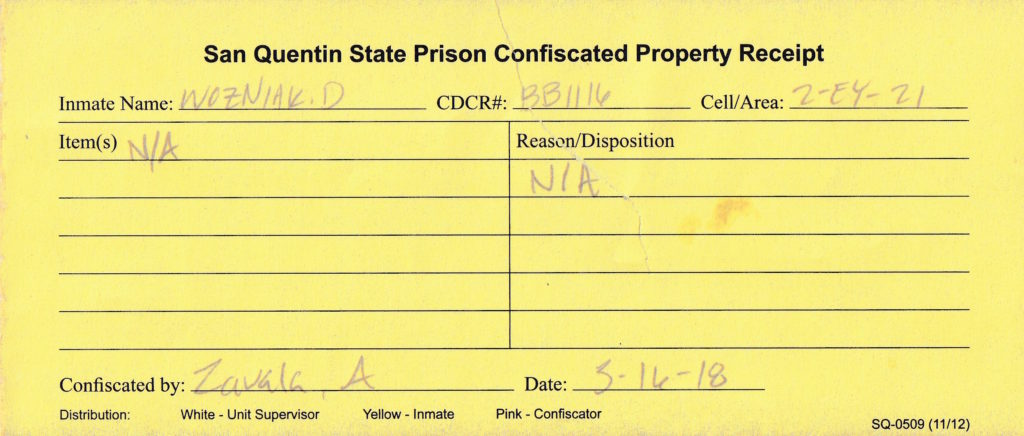
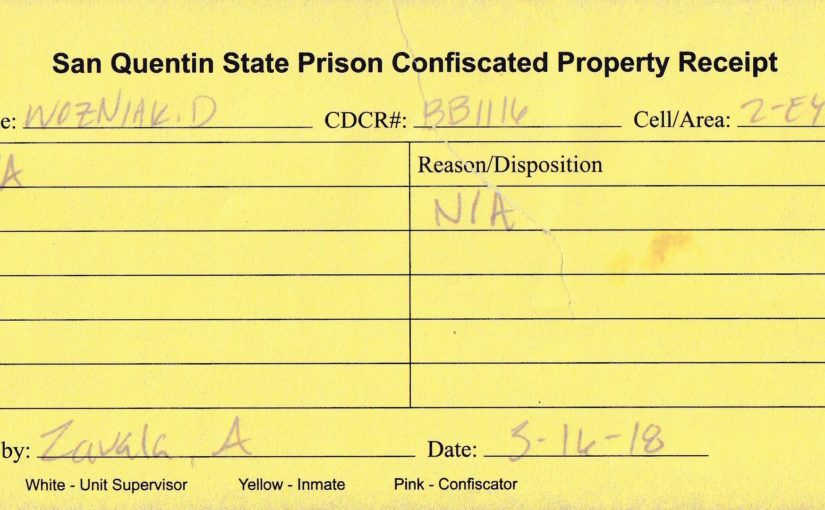

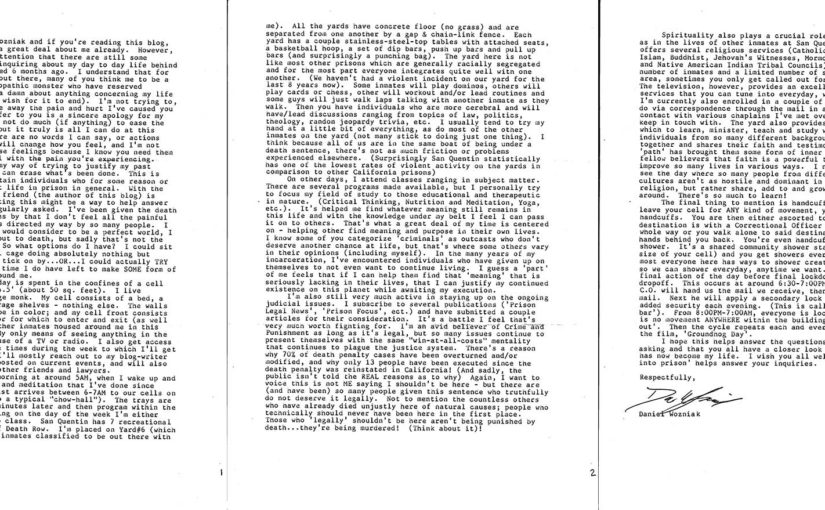
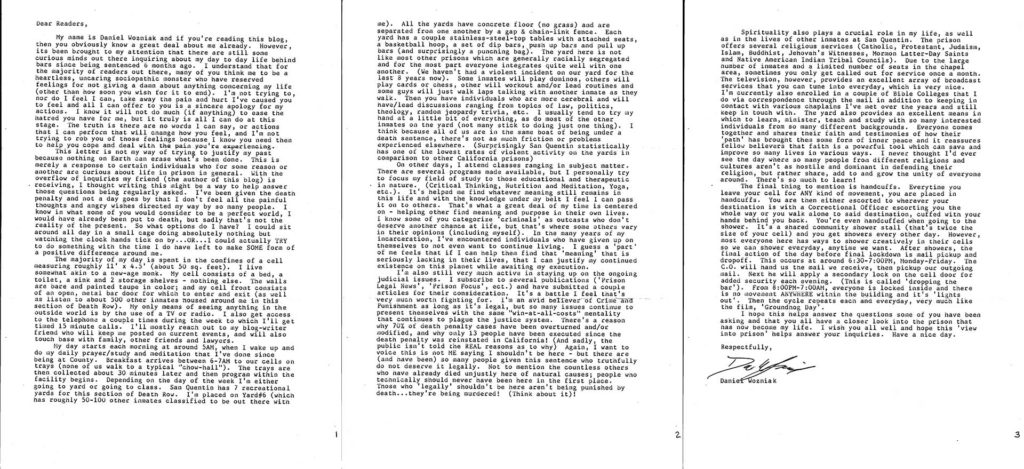
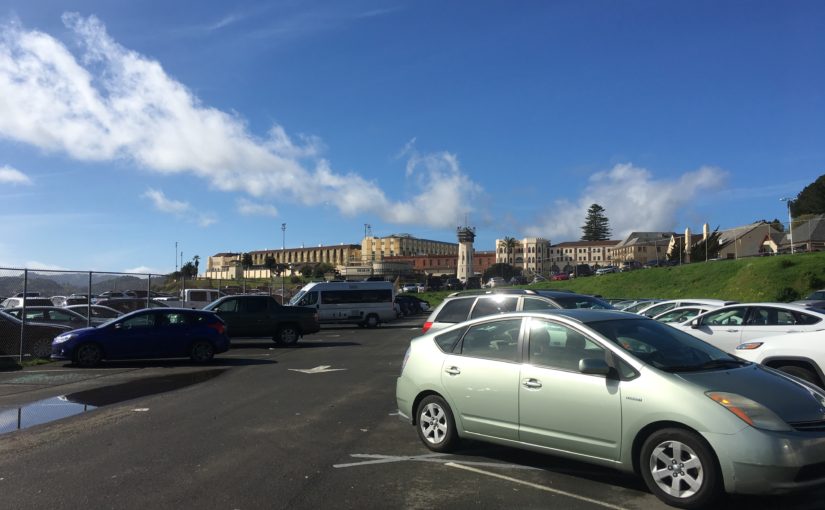
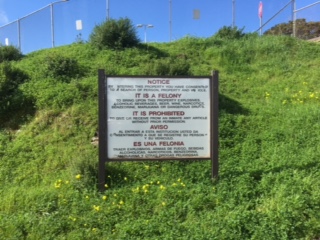 Before I could pack my suitcase, I needed to learn a completely different set of rules from the ones for visitors to county jail. The restrictions on clothing were much more stringent. This is from the
Before I could pack my suitcase, I needed to learn a completely different set of rules from the ones for visitors to county jail. The restrictions on clothing were much more stringent. This is from the 
 There were little blue and yellow and white beach cottages along the road and I was reminded of trips to Catalina Island. I was
There were little blue and yellow and white beach cottages along the road and I was reminded of trips to Catalina Island. I was  I spent some time looking around and snapping pictures of the numerous informational bulletins hung all over the wall. Many of the signs re-iterated the clothing and other visitor rules I’d seen online. If the guards deem your clothing to be unacceptable, you can borrow some used clothing they have available for such a circumstance. It reminded me of how my son’s middle school has a similar policy when kids forget their PE clothes. The loaner PE clothes are pink.
I spent some time looking around and snapping pictures of the numerous informational bulletins hung all over the wall. Many of the signs re-iterated the clothing and other visitor rules I’d seen online. If the guards deem your clothing to be unacceptable, you can borrow some used clothing they have available for such a circumstance. It reminded me of how my son’s middle school has a similar policy when kids forget their PE clothes. The loaner PE clothes are pink.  On my way out of the parking lot, I saw a small wooden sign shaped like a pointing hand hanging outside a building just in front of the main prison gates. It said “Hobby Gift Store.”
On my way out of the parking lot, I saw a small wooden sign shaped like a pointing hand hanging outside a building just in front of the main prison gates. It said “Hobby Gift Store.”